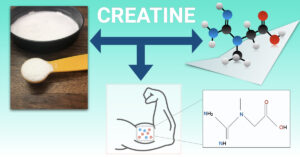Whether it’s because of vacation, a busy work schedule or injury, there will be times when we must take an extended break from the gym. No matter how dedicated we are when it comes to our workouts, it should come to no surprise that if you stop training, you’ll eventually lose the endurance, strength and muscle you worked so hard to build. But what might surprise some people is how long it really takes before these losses are actually witnessed. Multiple articles of research over the years have demonstrated that strength, size, endurance and neurological changes occur in the body, but in reality, the effects of detraining are not so straightforward and have led many to believe that their hard-earned work in the gym will be quickly lost; in fact, in some instances, reasonable time off has shown some beneficial effects to the body. For the context of detraining, we’ll be talking about a timeframe of 1-week or greater and highlight what actually happens to the body physiologically and mentally. Let’s get started.
Cardiovascular Endurance
Cardiovascular endurance, not muscle or strength, is the first fitness measure that begins to decline. While for some people this might not be a big loss, it’s important to understand how endurance affects the body in the first place since aerobic-based fitness benefits an individual’s overall well being. When you perform cardiovascular work, your muscles are engaged but to a limited extent. Instead, it’s your body’s energy system that improves vastly.
Specifically, you’ll see an increased number of capillaries in the muscle, which deliver blood and oxygen to your muscles; increased stroke volume, which is the amount of blood your heart can pump per beat; and increased size and number of mitochondria (which is the energy source of your muscle fibers). While there are other benefits of aerobic exercise, it’s quite clear that these four factors play a crucial role in the entire body. When it comes to aerobic fitness, the most accurate way of measuring is through VO2 max, which measures an individual’s capacity to take in, transport and then utilize oxygen during workouts. Research has shown that when detraining occurs, VO2 max and the heart’s ability to efficiently pump blood is reduced.
While this rate varies between individuals, studies have shown that endurance is the first to go. One research by the JISSN showed a 20% reduction in VO2 max after 4 weeks of inactivity and a 26% reduction after 2 months. Because cardiovascular activity has come to a halt, the stroke volume, capillary density and mitochondrial content begin to decrease, which is why endurance is the first fitness measure to decline. Some athletes may believe that the VO2 max decreases faster with increasing age—and while that is true—the changes aren’t dramatic. Instead, how fit an individual is before detraining seems to determine the greatest change.
Those who start off less fit have not yet completely adapted the beneficial effects of aerobic exercises, while those who are, would experience a greater change in their VO2 max. By way of example, imagine a marathon runner who can run a 5k in 20 minutes. After a week or so, their finishing time might increase by 10-15 sec. After 2 weeks, an entire minute might be added and after a month, their time might worsen by as much as 3 minutes.
Strength
Although aerobic fitness is important, many people are concerned with strength and muscle size. When I had to stop training due to a rotator cuff injury, I remember stressing over how much muscle and strength I would lose even in the first week of my 4-month rehab. Cardio was virtually an afterthought because in my mind I believed all the hard work I spent in the gym would begin diminishing instantly. Luckily, research has shown plenty to suggest the opposite. Although factors such as age and training experience are important, science indicates that detraining even for as much as 4 weeks has no noticeable effect on strength. For individuals in sport-specific activities, power might be reduced but for the average gym-goer, strength changes very little in a couple of weeks. So while there may be a slight decline, it’s less substantial than it is with cardiovascular fitness.
Why is this exactly? Well, when it comes to strength gains, your body isn’t just physically adapting to stress; it’s also improving the central nervous system and establishing a mind-muscle connection and muscle memory. These neurological adaptations are fundamentally different than what the body goes through when it engages in aerobic exercise and it can take anywhere from 2-8 weeks for the central nervous system to get into gear. So while strength might be built slowly, it’s also lost slowly.
Another thing to consider are the types of muscle fibers built during resistance training. If you weren’t aware, there are two types of muscle fibers: Slow Twitch (or type 1) and Fast twitch (or Type II). For strength and muscle size, type II fibers are recruited for these intense activities. During workouts, your muscles add these cells called myonuclei, which are funneled in due to strength training. What makes myonuclei important is its role in muscle memory. A 2016 study by Gundersen showed that myonuclei remains in the muscle, even during detraining phases and might even remain in human muscles for 15 years or more. This is where the concept of muscle memory is derived.
This also explains why experienced athletes and lifters are able to return to conditioned forms quickly after an extended period of detraining. The idea is that their bodies remember the stress due to these little myonuclei populating their muscles. In fact, one study of 46 individuals on a 16-week training regimen found that after 4 weeks of complete cessation of training, only a 6-9% of maximal strength decline was observed.
There is one important thing to note. Those that stopped training due to injury (such as myself) experienced greater strength and muscle loss to due specifically to atrophy. This is because muscle is generally immobile during the rehab phase vs people who have simply chosen to stop working out for a period of time. For instance, when you wear a cast, the muscle is completely restrained. Under those conditions, muscles atrophy much faster.
Muscle Size
If you’re like me, the biggest concern of detraining was the prospect of losing hard-earned muscle. But studies have shown that even up to 4 weeks of inactivity, muscle loss is virtually at a minimum. The first thing to understand when it comes to muscle loss is not to confuse it with glycogen depletion, which can oftentimes give the appearance of smaller muscle mass. In fact, a study done by LaForgia using a 4-Compartment model showed that after 3 weeks of detraining, individuals experienced no muscle loss at all, but instead saw a 0.7kg reduction in glycogen and water weight. This storage was easily replenished once training was resumed.
This also confirms that strength in experienced individuals did not diminish even after 4 weeks of detraining. However, as with strength, it was important to note that individuals who were more physically fit lost their gains at a faster rate than someone who was a beginner. This might seem unfair but since your body is adapted to training at an intense level, you’ll notice a difference sooner than someone who works out less frequently or at a much lower intensity. Conversely, the better shape you were in, the less time it will take to get back into shape.
Lastly, there is a tendency to believe that if you “don’t use it, you lose it” and that muscle will turn into fat. This could not be further from the truth as fat and muscle tissues are entirely different and are not interchangeable. This misunderstanding derives from the perception that when you detrain, you start to look soft and lack definition. What really happens is that muscle eventually begins to atrophy, which makes space for fat cells accumulate. This is especially true if you take time off from the gym, but continue to maintain the same caloric consumption or eat in a surplus. This gives the illusion that your 6pack has been converted into a pile of fat. Sadly, a lot of people fall prey to this common misconception and allow all their hard work to slip out of control. In reality, it takes time to build muscle, and it doesn’t just disappear the minute you stop working out.
Hormonal Changes
Earlier I mentioned that there were some benefits to detraining and while that might seem counterintuitive, research has shown that there are large hormonal influences on our body during detraining. To be specific, we aren’t talking about the typical rest days that you take off in between training sessions, or the weekend. Instead, we’re talking about extended periods of time off the gym with little to no physical stimulus.
One study showed a 6% decline in fiber cross-sectional area among weightlifters who stopped training over a period of 2 weeks, which is to be expected. But similar studies also found an average increase in plasma concentrations of growth hormone of 56% and a rise in testosterone levels by 19% in test subjects after detraining period of 3 weeks. Testosterone to cortisol ratio levels was also elevated by 68%, which resulted in an overall increase in anabolic hormones.
It might seem strange that testosterone to cortisol levels increase with less training, but this is exactly why many athletes perform deloads. Athletes do this to give their nervous system and muscles a break, which in return, promotes favorable anabolic responses. The speculation is that anabolic signaling becomes less sensitive due to chronic resistance training stimuli, so periods of detraining help restore this sensitivity. A 2014 journal by Brad Schoenfeld states, “this basically allows experienced lifters to break through a “ceiling effect.”
Mental Recuperation
Although this might seem out of the blue, I thought it was still very important to include since our wellbeing is predicated both on our physiology and mentality. Research has shown that exercising increases our mood by releasing dopamine and serotonin. Our self-confidence is also highly boosted when we reach a goal or PR, and this practice of consistency translates into our everyday lives. So for those of us sitting out injured, it can certainly drive us crazy when we have to sit out for an extended period of time.
However, with proper knowledge, we can sit out knowing that our bodies won’t betray the hard work we put into the gym. If you’re taking time off your workouts due to work or a busy schedule, try squeezing in even just one workout session per week until you can begin committing fully again. Research has indicated on numerous points that intensity and not volume helps maintain the stimulus your body needs. If you’re taking time off the gym due to an injury, such as I had to, rest assured that the most important thing is to rehab properly because your body will be primed to get back into your routine when you have fully healed.
Take this time instead to develop new workout plans and understand what led to your injury in the first place. Mental well-being is just as important as physical but it’s often undermined simply b/c people aren’t aware of its importance and allow unnecessary stresses to creep into their lives during this time.
Summary
- Cardiovascular endurance will be the first to drop
- Strength declines, but at a very slow pace due to muscle memory and can easily be recovered
- Muscle loss is experienced but slowly. Initial size loss is probably due to glycogen and water weight reduction. Additionally, muscle can only decrease but not be converted to fat. People who are more fit will experience loss of muscle mass faster but can easily recover once training is resumed.
- Adequate rest time in the form of deloading can contribute to an increase in growth hormone that is beneficial to muscle gain once training resumes
- Beginners and advanced lifters will always show different signs of detraining. But typically, advanced lifters will see their gains decrease faster, but this also means that it’s easier for them to recover their strength and size once they resume training.
- Mental well being and mood improves during and after training. But if you have to take time off—don’t stress. Research has shown that fitness gains are a trying process but that process isn’t immediately lost during rehab or resting periods. So don’t fall victim to perceived negativity.








